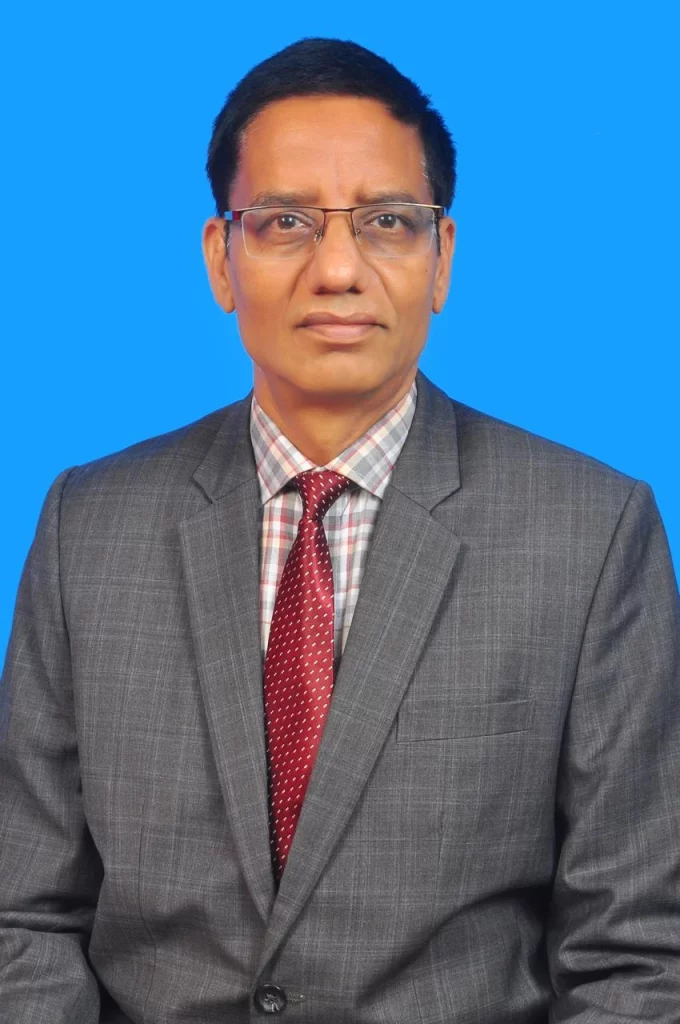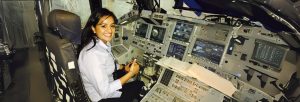(November 18, 2025) Dr Prakash Chand Jain’s work life is all rocket science. When the prominent scientist begins to talk about finite, element-based simulations, aeroelastic analysis, dynamic response of structures, and design of metallic and composite structures, the layman might not make anything of it. But it does make all the difference for India and its defence preparedness.
Over the last three decades, as a scientist associated with the Defence Research & Development Organization (DRDO), Dr Jain has made remarkable contributions to the field of engineering and technology in projects of national importance, which even earned him the prestigious Homi J. Bhabha Award.
Recently, he was elected as a Fellow of the American Society of Mechanical Engineers (ASME) in recognition of his outstanding engineering achievements and contributions to the engineering profession. “This recognition further strengthens my sense of responsibility and inspires me to contribute more steadfastly to the nation’s scientific and technological advancement,” says the scientist, researcher, technologist, engineer and academician, in a chat with Global Indian.
An alumnus of IIT Roorkee, IIT Bombay and a BOYSCAST Fellow from Penn State University USA, Dr Jain who is currently working at the Dr APJ Abdul Kalam Missile Complex–based Defence Research & Development Laboratory (DRDL), Hyderabad says India is on the threshold of emerging as a global leader in science, technology and engineering, driven by the vision, talent, and dedication of its scientific community.

National growth and vision
“Sustained innovation, collaboration, and perseverance are essential for national growth,” says Dr Jain, expressing his gratitude to his mentors at DRDO, his alma maters IIT Roorkee and IIT Bombay, and his colleagues at DRDL, whose guidance and encouragement have been integral to his journey.
He says that while the ASME recognition brings happiness and satisfaction, importantly, it is an opportunity to challenge himself to perform better at every stage ahead.
“It’s a message to embrace greater technological challenges in the days ahead and to meet the expectations set by visionaries, while contributing meaningfully to the nation,” says Dr Jain, who has received executive management training from George Washington University USA. He was also named an Associate Fellow of the American Institute of Aeronautics and Astronautics in 2018.
ASME and its legacy
Founded in 1880, ASME is an association of nearly 72,000 engineers from 130 countries who are dedicated to advancing the global engineering profession. More than 3,000 members have attained the grade of Fellow since the Society’s founding. Dr Jain has been associated with the American Society of Mechanical Engineers (ASME) since the beginning of his career.
Global engineering community
ASME helps the global engineering community develop solutions to real-world challenges by enabling collaboration, knowledge sharing, and skill development across all engineering disciplines, while promoting the vital role of the engineer in society.
Their codes and standards, publications, conferences, continuing education and professional development programs provide a foundation for advancing technical knowledge and a safer world.
Early career and DRDL journey
Through a campus interview at IIT Roorkee, Dr Jain joined the Tata Group in 1991. However, he always desired to work with a scientific organisation. One year later, he joined DRDO.
“Initial days at DRDL were full of thrill, filled with a quest for knowledge and with strong desire to apply the scientific knowledge to the projects of national importance,” recalls Dr Jain.
As a fresher from college, it was initially difficult to keep pace, but with the guidance from seniors, it became a smooth journey.
At DRDL, Dr Jain, like all other scientists, was always in a technologically challenging environment. “Keeping pace with global technological development, managing the changes, meeting the requirements, keeping the morale high of the team and deriving efficient output from the team formed part of our challenges.”

Rocket airframes and structural engineering
Dr Jain has made significant contributions to the field of rocket structures and aerospace engineering, particularly in areas of Mechanical Structural Technologies that have been applied to the country’s defence programs for the past three decades.
His key contributions include structural integrity analysis of rocket airframes using cutting-edge technologies.
Understanding structure and strength
Dr Jain says the concept of structures and strength is inbuilt in the human mind. “Whether we buy a table or a chair for our house, we look for the strong ones. So basically, structure is an assemblage of elements to transfer the loads,” he says.
Computation of deformations, internal forces and their response to external stimuli within structures for predicting the future performance, is the technological domain for the scientific community to explore, says Dr Jain.
Components and creation
“Machines, rockets, satellites and skyscrapers are important structures which are the outcome of structural technologist’s work,” says Dr Jain, explaining the nature of his work, which demands application of various technologies to achieve the target — from concept to reality, and from drawing board to product.
“We design the components, realize the components and then test it in the laboratory and field,” says Dr Jain, whose research findings are published in international journals and through granted patents.
Knowledge across centuries: Newton to Argyris
In any new development, points out Dr Jain, previously created knowledge always forms the foundation.
“We acknowledge the work of Sir Isaac Newton (1687) in the areas of laws of motion, Robert Hooke (1660) for law of elasticity. The law of elasticity is the basis of modern-day Finite Element Simulations,” he says, while highlighting the role of Prof J. H. Argyris (1960), who was a pioneer in the areas of Finite Element theory.

At the intersection of science, technology and engineering
“We are at the intersection of science, technology and engineering,” says Dr Jain, whose job revolves around understanding natural phenomena through observation and explaining it through mathematical modelling, substantiating it through experiments, and generating new knowledge.
“It is the fruits of science, technology and engineering which make society prosperous, dynamic and vibrant,” he remarks.
Penn State University and international collaboration
Dr Jain says the Department of Science and Technology (DST) encourages young scientists to carry out research work at any of the world-class institutions. “I was selected under the scheme named Better Opportunity for Younger Scientists in Chosen Areas of Science and Technology (BOYSCAST),” which led him to carry out research work at the Pennsylvania State University, USA.
That was the beginning of his collaboration at international level and over the period of time, such technical interactions have continued.
The IIT foundation
He says studying at IITs has had a life-long impact, and has laid the foundation for his future. “It was an unparalleled experience that shaped my career and perspective. I benefited from world-class faculty, cutting-edge research facilities, and a rigorous curriculum that fostered innovation, critical thinking, and problem-solving skills,” says Dr Jain, who has also attended a Leadership Program at IIM, Ahmedabad.
Collaborating with talented peers and being part of a strong alumni network opened doors to excellent professional opportunities. “Beyond academics, IIT nurtured my leadership, and holistic development through clubs, competitions, and cultural events.” Dr Jain says the education and exposure he received at IIT equipped him to contribute meaningfully to the engineering profession and the growth of the nation.
HJ Bhabha Award
In 2018, Dr Jain received the award at the 105th Indian Science Congress, particularly for his achievements in the field of aerospace engineering. “Receiving this award was a deeply humbling experience, as it not only acknowledged my work but also the collective efforts of the teams I have been associated with.”
Awards like this inspire him to continue striving for excellence, take on greater technological challenges, and contribute meaningfully to the nation’s scientific and engineering advancements.
Academic interactions
Dr Jain regularly participates in interactions with several academic institutions. “Academic Institutions are reservoirs of knowledge. They are doing excellent research work, probably they can also divert their energy towards applied research,” says the scientist, who had the opportunity to associate with Indian Institute of Technology Delhi as an AICTE-INAE Distinguished Visiting Professor.
“During interaction with students and faculty members, I see tremendous potential to work together,” says Dr Jain, who has also delivered guest lectures at many Hyderabad-based institutions.
Leveraging AI
In the future, Dr Jain plans to leverage Artificial Intelligence (AI) to revolutionize mechanical structural design. “By integrating machine learning, generative design, and predictive analytics, I aim to optimize structural performance, reduce material waste, and enhance safety and efficiency.”
He says AI will enable rapid evaluation of multiple design alternatives, simulate real-world operating conditions, and predict potential failures before they occur.
“My goal is to create intelligent, sustainable, and cost-effective designs that push the boundaries of traditional engineering,” says Dr Jain, who is also a Fellow of Aeronautical Society of India, Fellow of Institution of Engineers (India) and Fellow of Telangana Academy of Sciences.
A disciplined life and message to youngsters
Dr Jain’s day begins with Yoga, and he is at work by 9 am. After winding up around 7 pm, a brisk walk is a must for him. After dinner, he takes some time to review the research papers he receives from various journals across the globe. He is on the editorial board of a few journals. “Even after my work comes to an end, the mind continues to search for new directions in the background mode,” smiles the recipient of the Biren Roy Space Science Award.
“Enjoy your work, put your best to your profession, success will automatically come, don’t be afraid of setbacks. Fortune favours the performers,” is Dr Jain’s message to the youngsters.



